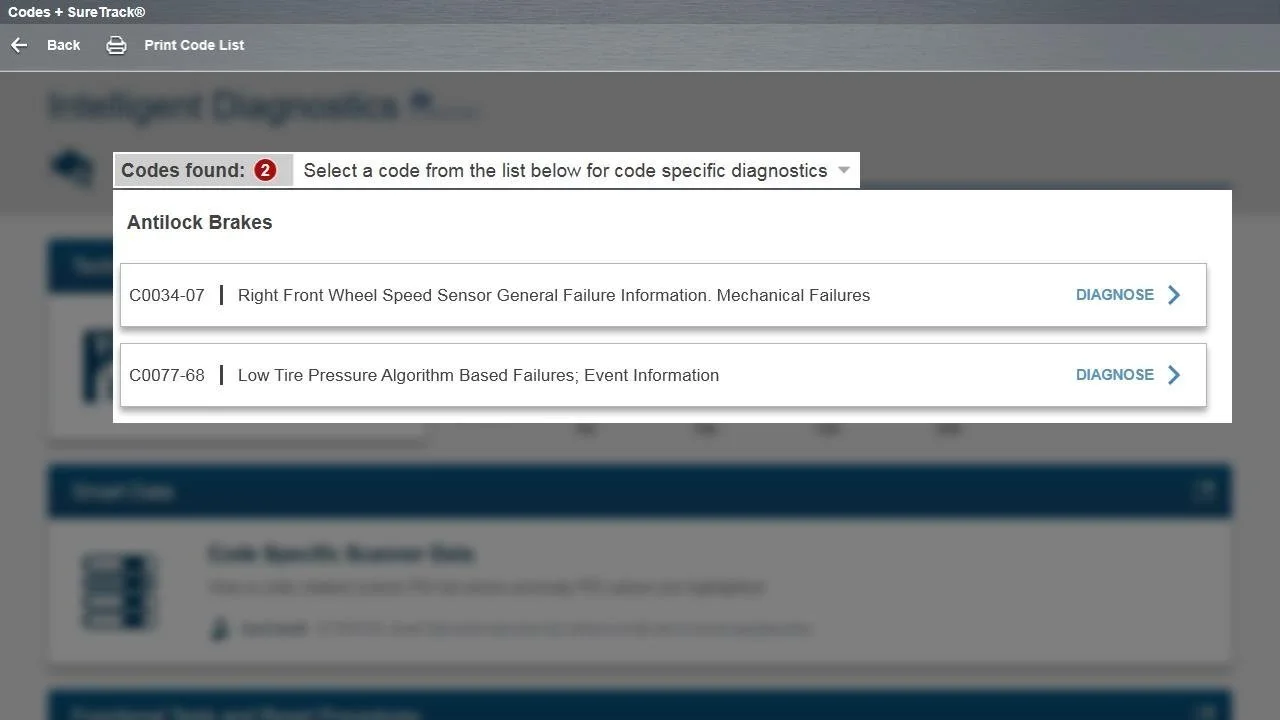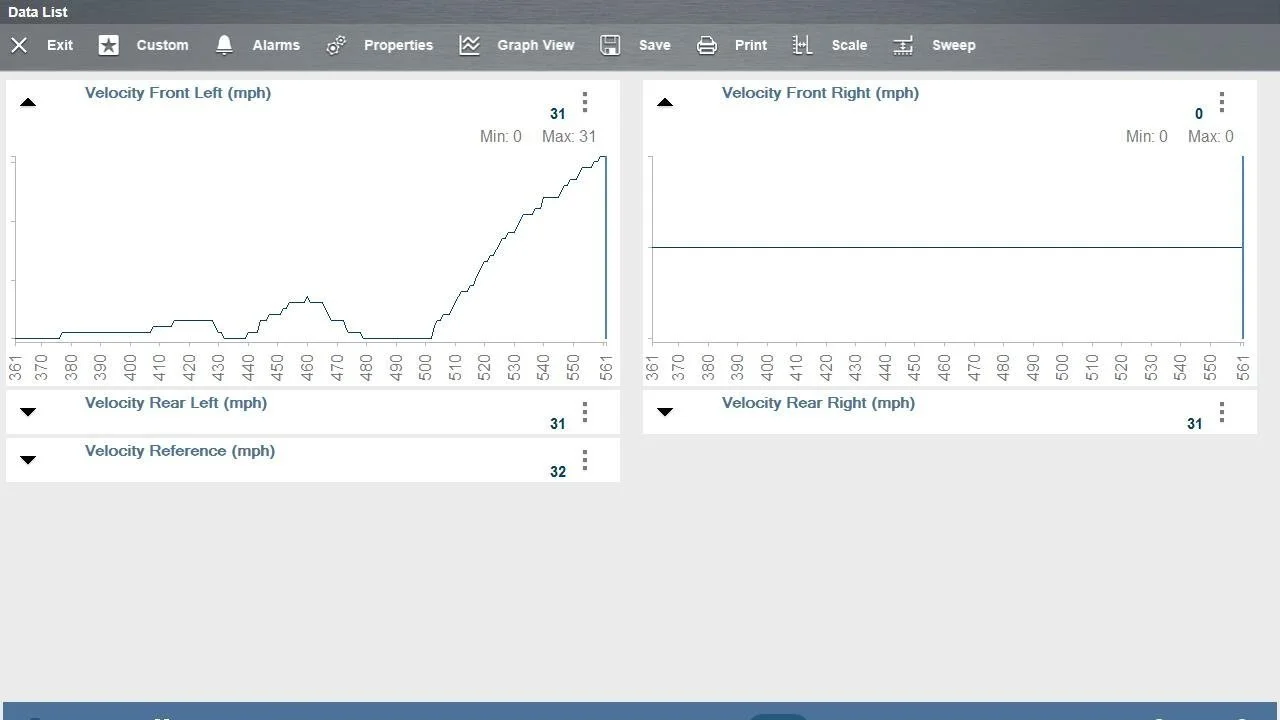[Solved] 2017 Volvo S60 - ABS light is on
Affiliate Disclosure: As an Amazon Associate, we may earn commissions from qualifying purchases from Amazon.com.
Here is a list of tools I use every day at the shop. Let me know if you use them too in the comments!
Customer Complaint:
This 2017 Volvo S60 came into the shop with a complaint of an ABS light on. ABS stands for Antilock Brake System.
First Thoughts:
ABS problems can be serious but can be boiled down to a few problems with the proper tools. Some possible issues with the Antilock Brake System can be:
A wheel speed sensor.
A wiring problem.
Low brake fluid.
A failed ABS module.
Diagnostics:
The steps in diagnosing this problem were simple.
Confirm the customer’s complaint.
Connect a scan tool and read the fault codes.
Review the live data and do a quick test.
Perform a visual inspection.
Repair the problem and confirm the fix.
1. Confirm the Customer Complaint:
With any vehicle, you have to confirm the complaint. For example, if the customer has a complaint of a noise in their vehicle, a test drive to confirm the noise is the first step. If you were to start taking the car apart before confirming the noise, it could easily lead you down the wrong path. It’s possible that the noise in the vehicle is just a can of green beans rolling around in the back floorboard. Yes, this is a real story of mine..
To confirm this Volvo’s complaint, all I had to do was check the instrument cluster. The ABS light was on.
2. Connect a scan tool and read the fault codes.
The scan tool I use is a Snap-On Zeus. It is a professional scan tool that has many functions, but there are many inexpensive scan tools on Amazon that can do the same function. Here is a list of those scan tools.
The picture below shows the fault codes in the ABS module.
The fault codes in the picture above show an error with the right front wheel speed sensor.
The wheel speed sensor is a component that reads the revolutions of each wheel and then reports it back to the ABS module. The ABS module uses this information to determine if a wheel has lost traction. It then reacts to correct the loss of traction.
The next step is to look at the live data to determine if the right front wheel speed sensor is sending information to the ABS module.
3. Review the live data and do a quick test.
The scan tool I’m using allows me to view each wheel speed sensor to see if they are performing correctly. While viewing the wheel speed sensors, I take a test drive to see which sensors are working and which are not.
The picture above shows that all of the wheel speed sensors except one are working. The wheel speed sensor that is not working is the right front, which correlates to the fault code.
In most cases, when a wheel speed sensor is not working, it can be traced to a bad wheel speed sensor. Other issues can be a broken wire, a bad connection, or a failed ABS module. The next step will help us determine the issue a little further.
4. Perform a visual inspection.
A visual inspection is using your eyes to view the troubled area. A simple look around can save a ton of time when diagnosing a vehicle.
Doing a visual inspection on this Volvo revealed good wires and a good connection. This step narrowed the problem to a bad wheel speed sensor or a failed ABS module.
I have repaired many ABS problems like this and can say that a bad wheel speed sensor is more common than a failed ABS module. Also, the ABS module is correctly reporting the information from the other wheel speed sensors, the chance that the ABS module has failed is low. From experience, I decided to condemn the right front wheel speed sensor.
5. Repair the problem and confirm the fix.
A new right front wheel speed sensor was installed.
After the repair, I connected the scan tool back to the Volvo and viewed the live data.
From the picture above, you can see the right front wheel speed sensor is working correctly.
This Volvo S60 is fixed!
Disclaimer and Disclosure:
Due to factors beyond the control of DiagnosticMechanic.com, it cannot guarantee against unauthorized modifications of this information, or improper use of this information. DiagnosticMechanic.com assumes no liability for property damage or injury incurred as a result of any of the information contained in this website. DiagnosticMechanic.com recommends safe practices when working with power tools, automotive lifts, lifting tools, jack stands, electrical equipment, blunt instruments, chemicals, lubricants, or any other tools or equipment seen or implied in this website. Due to factors beyond the control of DiagnosticMechanic.com, no information contained in this website shall create any express or implied warranty or guarantee of any particular result. Any injury, damage or loss that may result from improper use of these tools, equipment, or the information contained in this website is the sole responsibility of the user and not DiagnosticMechanic.com.
DiagnosticMechanic.com is a participant in the Amazon Services LLC Associates Program, an affiliate advertising program designed to provide a means for sites to earn advertising fees by advertising and linking to Amazon.com. In many of our case studies, articles, and tool reviews, we may earn a small commission when readers purchase products through our links.




![[Solved] 2017 Volvo S60 - ABS light is on](https://images.squarespace-cdn.com/content/v1/5e28e94700c2293a99d3d098/06f070df-dff5-439c-989c-ac5a7a5e2097/%5BSolved%5D+2017+Volvo+S60+-+ABS+light+is+on)